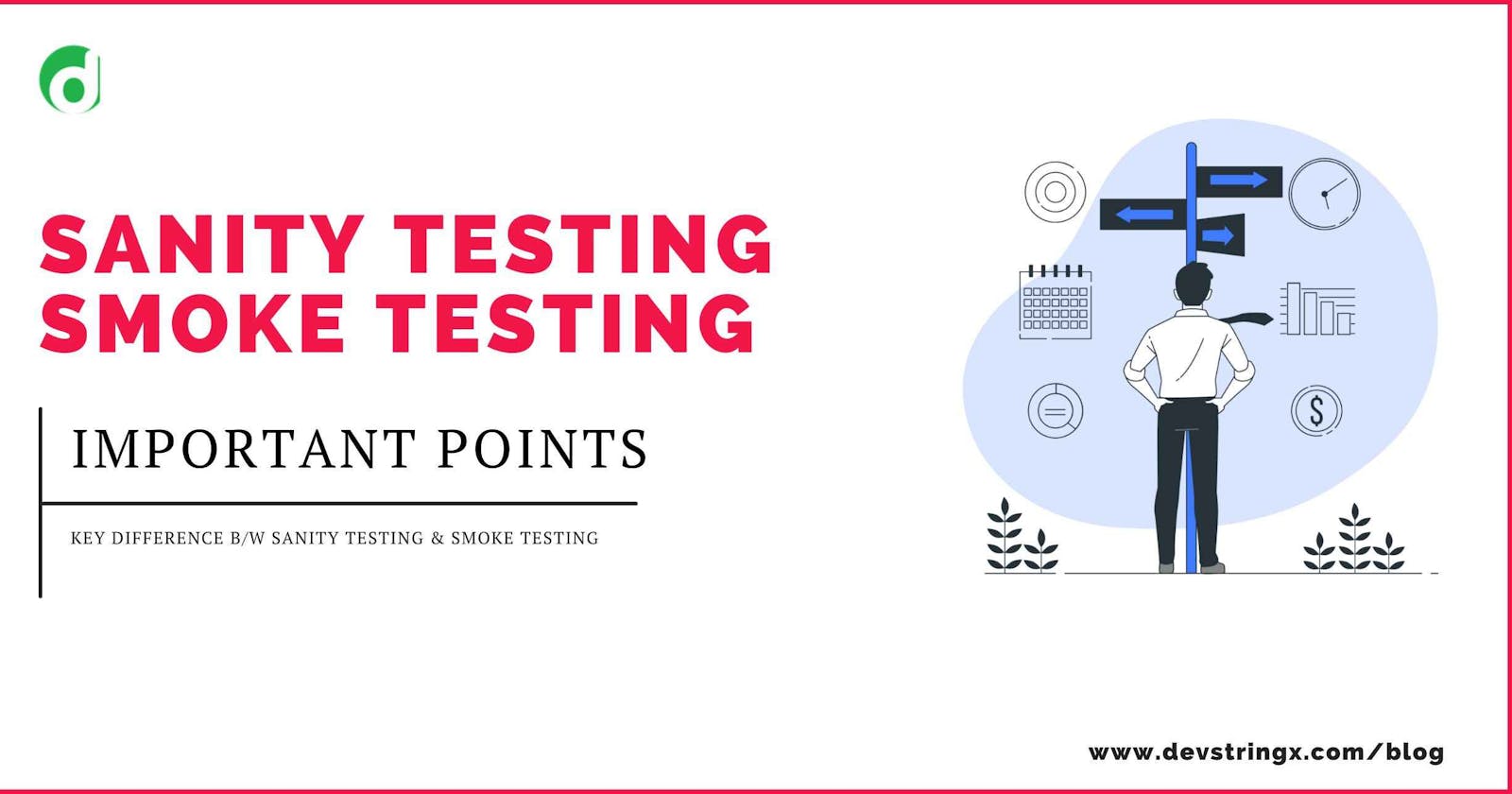Smoke Testing Vs Sanity Testing – Devstringx
The Key Difference Between Smoke Testing Vs Sanity Testing

What Is Smoke Testing?
Smoke testing is a kind of software testing used after a software build to ensure that the important features of the product are functioning properly. It is run ahead of any comprehensive functional or regression tests. Smoke testing is mostly used to reject software applications that have bugs so that the QA team won’t waste time testing them.
In smoke testing, the test cases choose to focus on the system’s most crucial feature or component. Instead of comprehensive testing, the goal is to ensure that the system’s essential features are operating as intended.
A typical smoke test would include checking that the program launches successfully, the GUI is responsive, etc. as an example.
Real-World Example
Suppose you are employed by an online retailer. As a Software QA, it is your responsibility to ensure that the essential features are operational when a new build is made available for testing. So you attempt to access the online store and add an item to your shopping basket to make a purchase. In the majority of eCommerce sites, that is a crucial workflow. If the flow is successful, the build can consider successful. On the same build, you can continue with functional testing.
If you’re new to smoke testing, you can learn more about What Is Smoke Testing?
What Is Sanity Testing?
Sanity testing is a type of software testing carried out following the delivery of a software build with minor code or feature modifications to ensure that the bugs have been fixed and no new problems have been brought about as a result of these changes. The objective is to establish that the proposed functionality performs essentially as anticipated. To avoid wasting time and money on more thorough testing, the build refuses if the sanity test fails.
The goal is to show that the developer used some sanity (rationality) when creating the software, not to “completely” test the new feature.
Real-World Illustration
Let’s use the same illustration as before. Let’s say you are developing an online store. The functionality of Search has been enhanced by a new feature. Here, the search feature should be your primary concern. You go on to other crucial features, including payment flow, after making sure the search functionality is functioning properly.
We have written a detailed blog on Sanity Testing. Feel free to check out What Is Sanity Testing?
An Example of The Difference Between Smoke and Sanity Testing is as Follows
For example: For the initial release of a project, the development team makes the build available for testing, and the testing team evaluates the build. To accept or reject the build, it must first undergo testing. We refer to this as smoke testing. The build goes through additional testing if the test team approves it. Imagine that the build has three modules: Employee, Admin, and log in. Without delving further, the testing team only evaluates the application’s core features. We refer to this as sanity testing.
Don't limit your knowledge, Our software test engineer has written a detailed step-by-step blog on Sanity Testing Vs Smoke Testing so kindly click on the given link to Learn, Discover, & Explore your knowledge!
